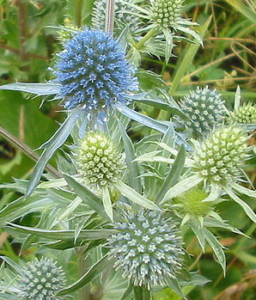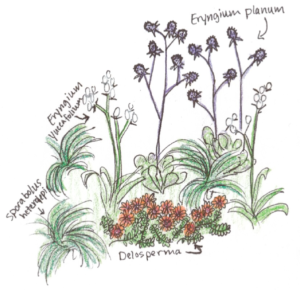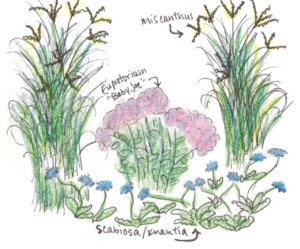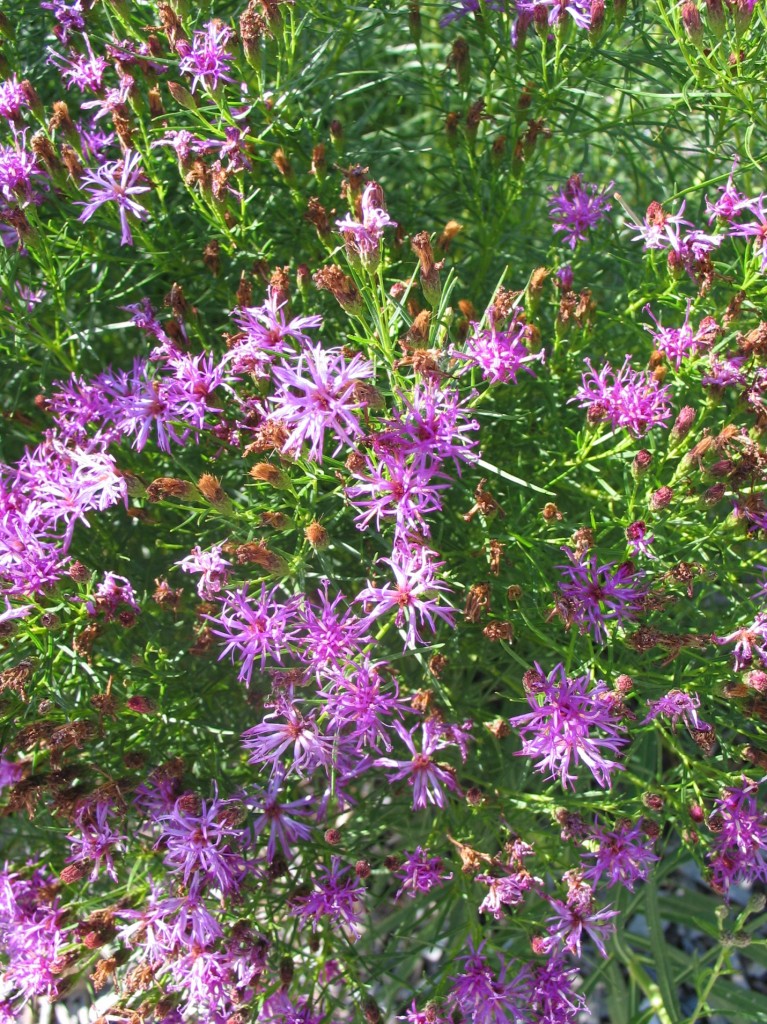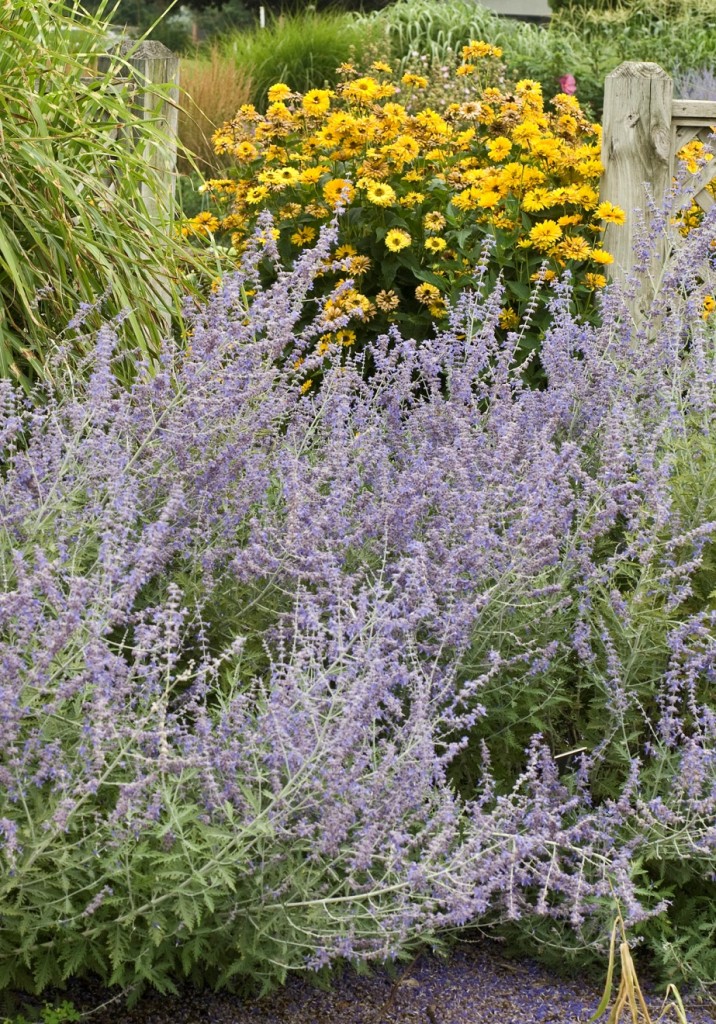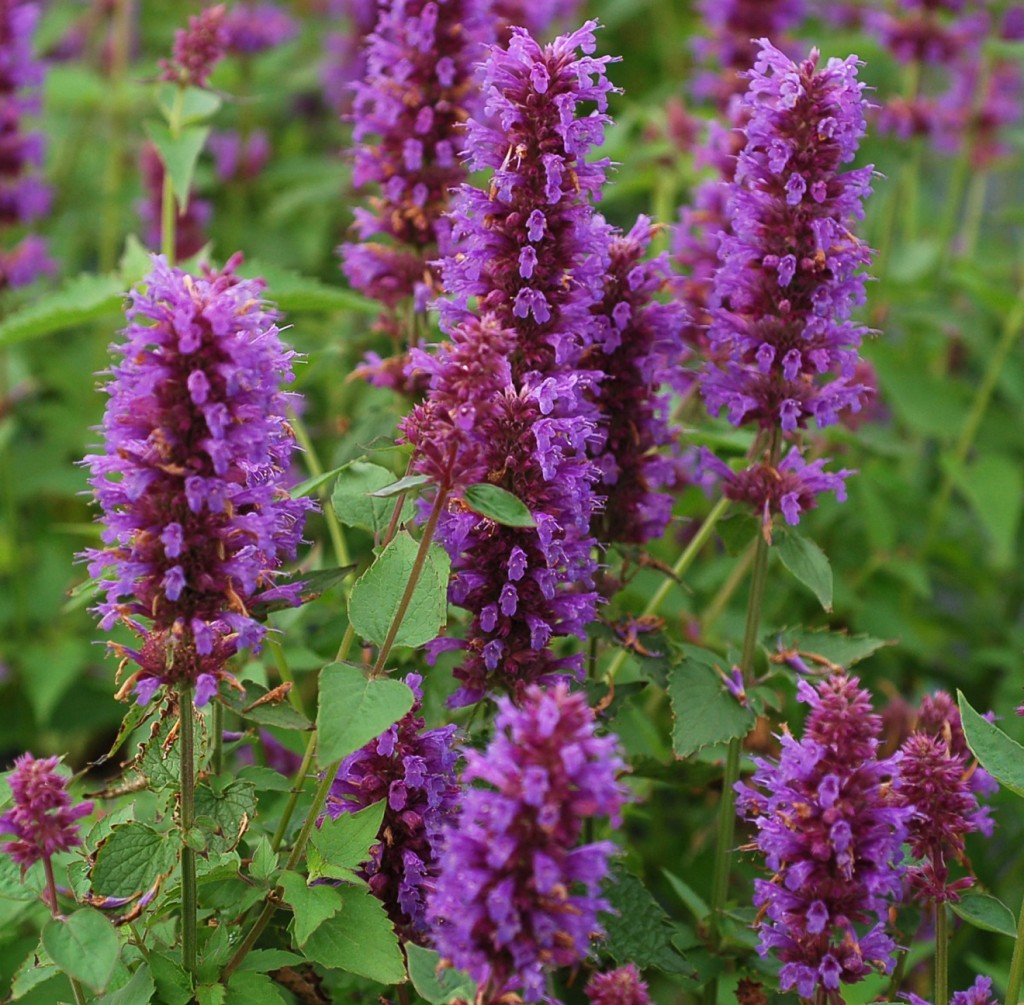As the weather warms up and perennials begin to sprout I find myself in the gardening mood! Whether filling in gaps in an existing garden bed or planting up a new area, knowing which plants will look best together can be a sort of guessing game. But a fun one! When I start getting too many ideas about what plants to pair up, I put pencil to sketch pad and doodle my ideas into reality.
There are countless unique, easy combinations for every situation that can incorporate natives, exotics and even our old garden favorites. Maybe you can use some of my recent sketches, maybe they will inspire you to draw up some of your own!
For the Shady Place
Try partnering bright colored blooms together and using leaf color that adds contrast. For example, using light greens behind darker greens can add depth and interest to an area that is only foliage. You can use striped hostas (Liberty, June Spirit, Brother Stephan) to liven up a dark area and use lowgrowing spreaders as ground cover between them (Ceratostigma plumbagnoides, Gallium odoratum) In my shade garden at home I already have some hostas planted, so I am thinking of filling in around them with some native Silene stellata (Starry Champion) and some non-native Epimedium rubrum (Barrenwort). Waldesteinia fragoides (Barren strawberry) might be the perfect ground cover to suppress weeds around it all. The purplish hue of the epimedium blooms will work well with the yellow of false strawberry since they are complementary colors (situated opposite each other on the color wheel).

Epimedium rubrum By Salicyna (Own work) [CC BY-SA 4.0 (http://creativecommons.org/licenses/by-sa/4.0)], via Wikimedia Commons. Silene stellata at https://commons.wikimedia.org/wiki/File:Silene_stellata_flowers.jpg
Barren Strawberry by User:SB_Johnny (Own work) [GFDL (http://www.gnu.org/copyleft/fdl.html) or CC-BY-SA-3.0 (http://creativecommons.org/licenses/by-sa/3.0/)], via Wikimedia Commons
Solidago rigida (Rigid Goldenrod) + Anemone ‘Pink Kiss’ (Pink Snowdrops)
Heuchera ‘Fire Chief’ + Carex pennsylvannica (Pennsyvannia Sedge)
Asarum canadense (Wild Ginger) + Matteuchia struthiopteris (Ostrich Fern)
For the Hottest Hot Spot
What plants can partner together to beat the heat? A dry, hot spot is a perfect place for mixing native grasses and wildflowers that have evolved in the prairie sun. For a rock garden or sunny burm, try this combination of Eryngium yuccafolium (Rattlesnake Master) and Eryngium planum (‘Blue Glitter’ Globe Flower) that will complement each other’s whimsical, spherical blooms. Sporobolis heterolepis (Prairie Dropseed) and Delosperma (‘Firespinner’ Creeping Ice Plant) will fill in around the base of the taller plants. Not only are the Eryngiums major pollinator magnets, they are also long lasting cut flowers! The bright orange-red blooms of the ice plant will warm up the cool hues of the eryngiums.
Other suggestions for full sun pairings:
Achillea ‘Moonshine’ (Yellow Yarrow) + Callirhoe involucrata (Poppy Mallow)
Rudbeckia missouriensis (Black Eyed Susan) + Helenium ‘Salsa’ (Sneezeweed) + Sedum ‘Lidakense’
If You Need Some Height…
Perhaps growing along a fence or forming a border between yards, tall plants provide structure for the garden. A columnar grass species like Panicum ‘Northwind’ (Switchgrass) or Miscanthus (Silvergrass) can be the eyecatching backdrop for other perennials. They also provide support to tall flowers that might otherwise flop over when they reach their mature heights. Planting Veronicastrum ‘Lavender Towers’ (Culver’s Root) or Eupatorium maculatum (Joe Pye Weed) between tall, strong stemmed grasses can keep them upright in a stiff prairie wind. The sketch below shows a shorter variety of Joe Pye called ‘Baby Joe’ situated between some Miscanthus grass with Scabiosa (or, just as well suited, Knautia) growing wispily in front.

Eupatorium (right) by Krzysztof Ziarnek, Kenraiz (Own work) [CC BY-SA 4.0 (http://creativecommons.org/licenses/by-sa/4.0)], via Wikimedia Commons
Blue Scabiosa by By Xemenendura (Own work) [CC BY-SA 3.0 (http://creativecommons.org/licenses/by-sa/3.0)], via Wikimedia Commons
Andropogon gerardii (Big Bluestem) + Coreopsis tripteris (Tall Coreopsis)
Calamagrostis acutiflora (Karl Foerster Grass) + Salvia azurea ‘Grandiflora’
Partnering plants is the fun part of perennial gardening – let your imagination go wild! Use the color wheel to make the most of your pairings and pay close attention to foliage shape and texture to achieve a harmonious look. If you think some of the plants in this post will work well in your yard, come to our FloraKansas Plant Sale April 28th – May 1st! This is our largest fundraiser of the year, and your purchase makes educational programming and the management of Arboretum grounds possible.


